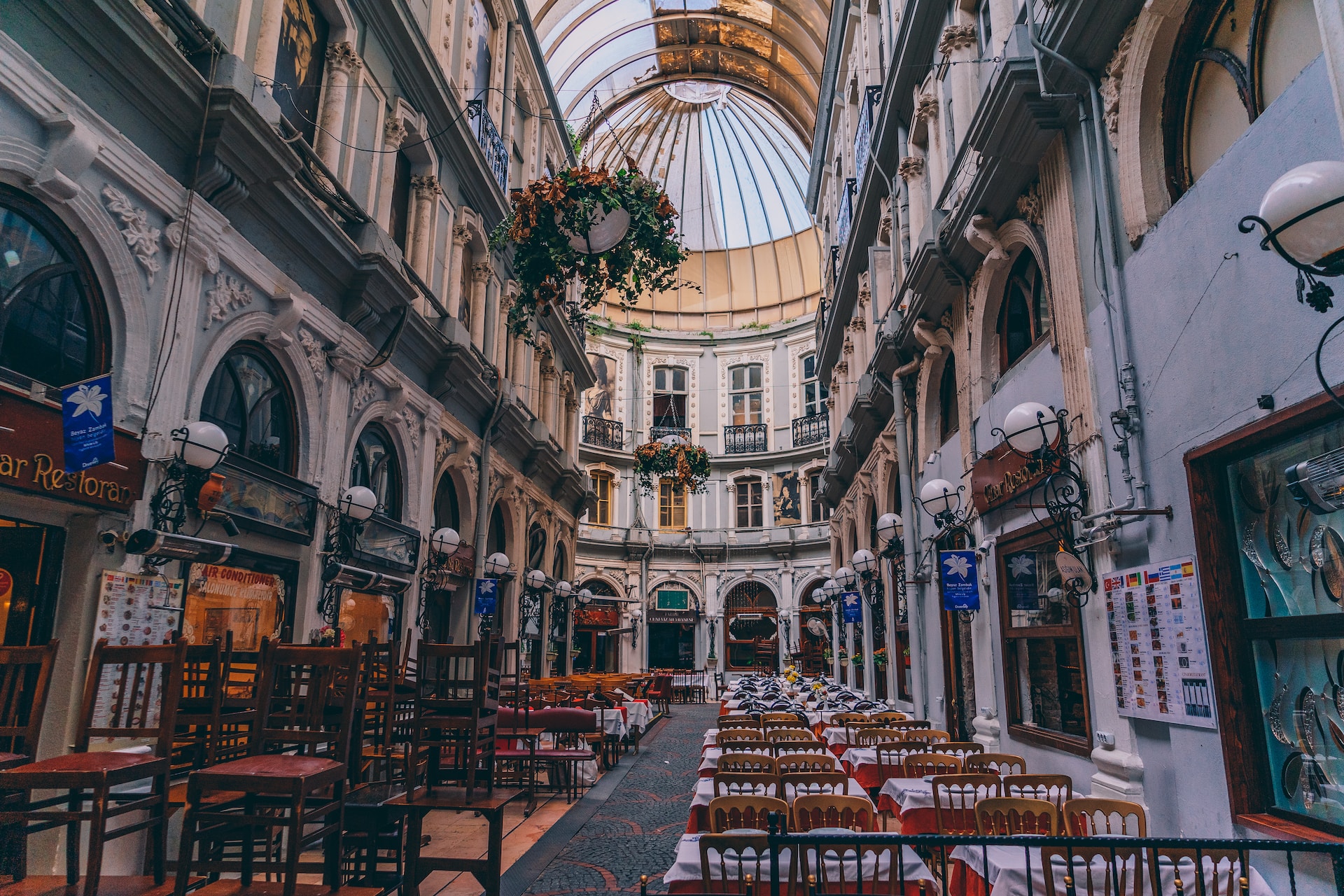Culture & Travel
3 November 2023One of the iconic districts that define Istanbul's essence. Actually, calling it just a 'neighborhood' would be an understatement. Despite its relatively small area, it comprises a diverse tapestry of communities.
Many of Türkiye's groundbreaking moments unfolded here. It served as the introduction point for various novelties such as beer, chocolate, violins, guitars, ready-to-wear clothing, and photography. Notably, it hosted Türkiye's maiden pharmacy, contemporary theater, cinema, pastry shop, and bank. Beyoglu witnessed the birth of Türkiye's first espresso and the installation of the first piano in a local household. It was also the site of Türkiye's inaugural district municipality. Essentially, it was a microcosm of Europe within Istanbul. Our focus today is precisely on Beyoglu, an enigmatic and captivating district of Istanbul. To delve into its complete historical significance and the luminaries who graced its streets would take an entire night. So, let's distill it into a concise narrative for better comprehension. Beyoglu's earliest significant settlement traces back to the Byzantine era. During this time, Istanbul didn't stretch from Kartal to Pendik, unlike today. The historical peninsula, now referred to as Fatih, along with an area nearly half the size of present-day Beyoglu, was enclosed within city walls. Back then, Fatih housed local residents, imperial palaces, temples, and administrative centers. In contrast, Galata functioned as a trading hub, particularly for foreign merchants, especially those from Genoa. This dynamic persisted even after the Ottoman conquest of Istanbul, shaping Galata as a European colony, fostering a palpable European influence that permeated the chemistry of Beyoglu. That's enough for the preamble; let's move swiftly to the article before it loses its warmth. Enjoy your reading experience.
The Çiçek (Flower) Passage
Let's commence with the most renowned arcade in Beyoglu. A pivotal moment in Beyoglu's history was the Great Fire of 1870, a cataclysm that reshaped Istiklal Street as we know it today.

Çiçek Passage, located on Istiklal Street, sits diagonally across from Galatasaray High School. Before the 1870 fire, this passage was the famed Naum Theater, an emblem of 18th-century Istanbul. Even Sultan Abdülaziz I and Abdülmecit I frequented this theater to enjoy various theatrical performances and operas. The Naum Theater encapsulated the aristocratic air that characterized Beyoglu at the time. After the fire, a segment of the land was acquired by the Beyoglu Municipality for urban redevelopment. Later, a Greek entrepreneur named Christaki Zografos purchased the plot and erected a distinctive building that bore little resemblance to the original Naum Theater. It's worth noting that the adjacent Sahne Street, too, bears remnants of the Naum Theater era.

Now, why is this passage called Çiçek (Flower)? Originally named Cite de Pera, this passage became the hub where White Russians, aristocrats who fled the Bolshevik Revolution, sold flowers after abandoning their possessions. Thus, a culture of flowers blossomed in Beyoglu. In the 1930s, daily flower auctions commenced here, flooding the shops with blooms. Subsequently, in the 1940s, the emergence of beer houses and eateries led to the gradual departure of florists from the passage. Only the legacy of the flower's name remained, a tribute to an era where the flowers didn't wilt, even if the flower culture eventually faded away.
Cercle D’Orient Arcade
Before delving into this arcade, we need to shed light on an architect who has become synonymous with Istanbul. The most prominent structures of 19th-century Istanbul bear his mark. Pera Palas, Müşir Zeki Pasha Mansion, the Russian Consulate General, Istanbul Archaeology Museum, Ahmet Afif Pasha Mansion, Vahdettin Mansion, Ottoman Bank, and many more were brought to life by this remarkable figure. He was none other than the renowned Alexandre Vallaury, also the pioneer behind Türkiye's inaugural architecture faculty. It was Abraham Karakahya Pasha who commissioned Vallaury to construct this arcade back in 1875. Adorned with Corinthian-style capitals and columns, this arcade initially served as a prestigious gathering spot. Notable businessmen, bankers, and influential figures of the Levantine community were counted among its members. During the occupation of Istanbul, it was temporarily repurposed as the headquarters for British officers. The property changed hands twice after being sold in 1919.

As a matter of fact, it's hard to miss this structure for those who frequent the Beyoğlu district, as it stands today as the Grand Pera Shopping Mall, still infusing the aesthetic fabric of Beyoğlu with its unique charm. We owe it to Vallaury for this lasting legacy.
Rumeli Arcade
We made a stop at another captivating site on Istiklal Street and were met with an architectural marvel. Standing before us was the Rumeli Arcade, elegantly reaching towards the sky. Erected in 1897 under the supervision of Ragıp Sarıca, the head of the Yıldız Palace, this distinct structure was designed by August Jasmund. Within the 56-apartment building, Rumeli Passage, the upper floors were designated as residential quarters, housing distinguished establishments such as the Makridis Patisserie, the Russian Jeweler Melevic, Tailor Teodoridis, Dr. Manailoğlu, Gallery Edip, and Abdullah Efendi Restaurant. The grand entrance of the building greets us with its magnificent eclectic door. Presently, it continues to breathe life into Beyoğlu with its assortment of restaurants and dessert shops on the ground floor.
Syria Arcade
Yet another enduring marvel along Istiklal Street is the remarkable Syria Arcade. Situated opposite the Russian Consulate, the edifice was commissioned by the Abut Family and brought to life by the architect Dimitri Basiliadis. Comprising of three distinct apartment blocks, the lower floors of the building were designated for a bustling bazaar, while the upper floors were used for residential purposes, much like the setup of the Rumeli Passage. This passage was home to the printing house of the Journal de Stanboul, the longest-running newspaper in our history, which continued its operations for a remarkable 100 years. The Syrian Arcade still stands today, hosting furriers, leather shops, as well as esteemed establishments like the jeweler Niko Lukidis, the shoemakers Mihalidis and Havyaras, and the Tayer Tailor Shop.


